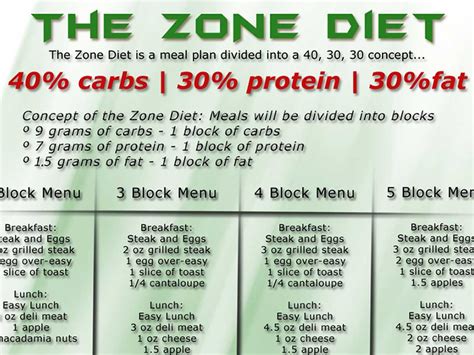Learn about the Fit For Life Diet’s key principles, benefits, and challenges and get tips for success in this compreh
Introduction to Fit For Life Diet
Contents
Fit For Life diet is a nutritional program that focuses on eating natural, whole foods and avoiding processed and refined foods. The diet also emphasizes the importance of food combining, which involves eating certain types of foods together for optimal digestion and nutrient absorption.
The Fit For Life Diet was created by Harvey and Marilyn Diamond and first published in 1985. It gained popularity for its teachings on the proper food combinations for optimal health and weight loss. The key principle of the Fit For Life diet is to eat predominantly fruits in the morning, consume primarily carbohydrates during the day, and eat protein and vegetables in the evenings.
Another fundamental aspect of the Fit For Life diet is its focus on maintaining a high intake of raw fruits and vegetables, which are rich in essential nutrients, fiber, and enzymes. The diet also recommends avoiding dairy, meat, and processed foods to support overall health and well-being.
In addition to its dietary recommendations, the Fit For Life diet encourages regular exercise and stress management for a holistic approach to health. By following the principles of the Fit For Life diet, individuals aim to improve their digestion, energy levels, and overall vitality.
Key Principles of Fit For Life Diet
Fit For Life Diet revolves around the idea that our bodies are designed to function best when we consume foods in their most natural state. This means that the principle of naturalness is a key component of the diet. This principle encourages followers to eat foods that are as close to their natural state as possible, with minimal processing or refining. This includes consuming plenty of raw fruits and vegetables, as well as whole grains and legumes.
Another key principle of Fit For Life Diet is food combining. This principle suggests that certain foods digest better when eaten separately from others. For example, the diet recommends avoiding combining proteins and carbohydrates in the same meal. Additionally, the diet encourages consuming fruit on an empty stomach, as it is said to digest more efficiently this way.
Fit For Life Diet also emphasizes the importance of listening to your body. The diet encourages followers to pay attention to how different foods make them feel, both physically and mentally. This is seen as a way to inform food choices and ensure that individuals are eating in a way that best supports their overall well-being.
A final key principle of the Fit For Life Diet is regular exercise. This diet advocates for incorporating regular physical activity into one’s daily routine as a way to support overall health and well-being. Exercise is seen as an important component of the diet’s approach to promoting a balanced and healthy lifestyle.
Benefits of Fit For Life Diet
The Fit For Life Diet is a lifestyle-based diet that emphasizes eating nutrient-dense foods and getting regular physical activity. One of the main benefits of this diet is that it promotes weight loss and improved overall health. By focusing on whole, natural foods, individuals following this diet can experience a reduction in inflammation, increased energy levels, and a lower risk of chronic diseases such as heart disease and diabetes.
Another benefit of the Fit For Life Diet is its flexibility. This diet does not restrict any specific food groups, but instead encourages individuals to make mindful choices and be aware of how different foods make them feel. This can lead to a sustainable, long-term approach to healthy eating and a healthier relationship with food.
Additionally, the Fit For Life Diet promotes digestive health and regular bowel movements
Challenges of Fit For Life Diet
Challenges of Fit For Life Diet
Many people find that following the Fit For Life diet plan presents several challenges that can be difficult to overcome.
One of the main challenges is the emphasis on consuming primarily raw fruits and vegetables for certain meals. This can be particularly difficult for individuals who are used to consuming a diet high in processed foods, as it requires a significant shift in eating habits.
Additionally, adhering to the food combining principles of the Fit For Life diet can be challenging. This approach requires careful consideration of which foods are consumed together, which can be difficult to navigate for those who are used to more traditional dietary patterns.
Another challenge is the need to plan meals carefully in order to ensure that they align with the guidelines of the Fit For Life diet. This can require a significant amount of time and effort, which may be difficult for individuals with busy schedules.
Finally, some individuals may struggle with the social aspects of following the Fit For Life diet. Dining out and attending social events can be challenging when trying to adhere to the specific principles of this eating plan.
Tips for Success on Fit For Life Diet
One of the key principles of the Fit For Life Diet is to focus on consuming fresh, whole foods. This means incorporating plenty of fruits, vegetables, whole grains, and lean proteins into your daily meals. By prioritizing these nutrient-dense foods, you can ensure that your body is receiving the essential vitamins, minerals, and antioxidants it needs to thrive.
Another important tip for success on the Fit For Life Diet is to stay hydrated. Drinking plenty of water throughout the day is crucial for supporting your body’s natural detoxification processes and promoting overall health. Additionally, staying well-hydrated can help to reduce feelings of hunger and prevent overeating.
In addition to focusing on the types of foods you eat, it’s also important to pay attention to the timing of your meals. The Fit For Life Diet encourages eating smaller, more frequent meals throughout the day, rather than sticking to the traditional three large meals. This can help to keep your energy levels steady and prevent dips in blood sugar, which can lead to cravings and overeating.
Finally, a key tip for success on the Fit For Life Diet is to incorporate regular physical activity into your routine. Whether it’s going for a walk, taking a fitness class, or hitting the gym, finding ways to stay active can help support your weight loss and overall well-being. Not only does exercise burn calories, but it also helps to boost your metabolism and improve your mood.














